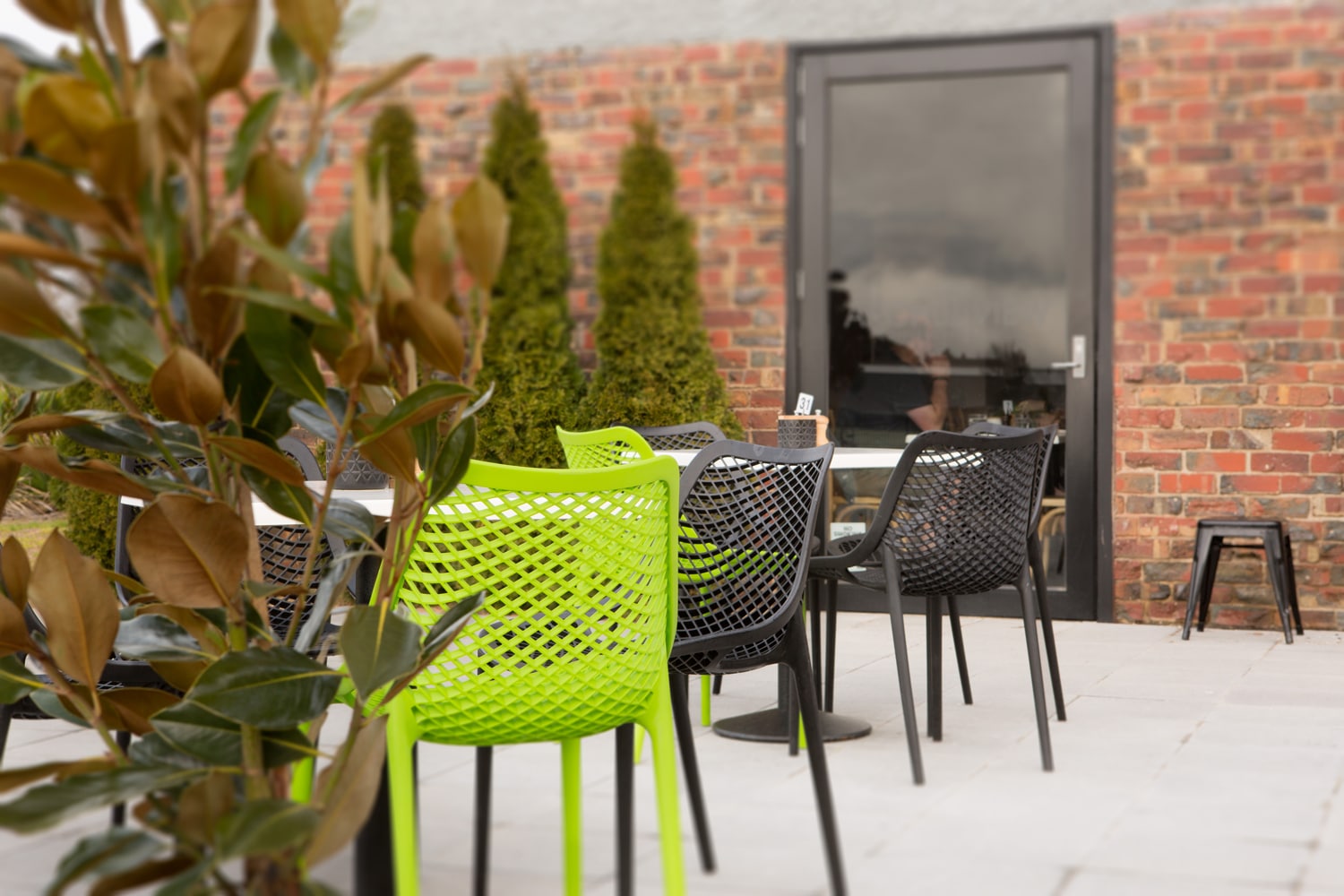No matter whether you’re choosing chairs for you indoor or outdoor café, your choice of chairs is very important. There are so many options available and such a large range in pricing across the industry. We understand this may make your decision hard to make and so we have pulled together a pricing guide especially for you.
When it comes to the pricing of café chairs, there are many factors that cause the prices to fall and rise, and we’re here to help you make the most informed decision you can.
Possibly the biggest factor that causes pricing to increase across the industry stems from the quality of the chair that you purchase. This can be affected by the materials used and the even the place of manufacture.
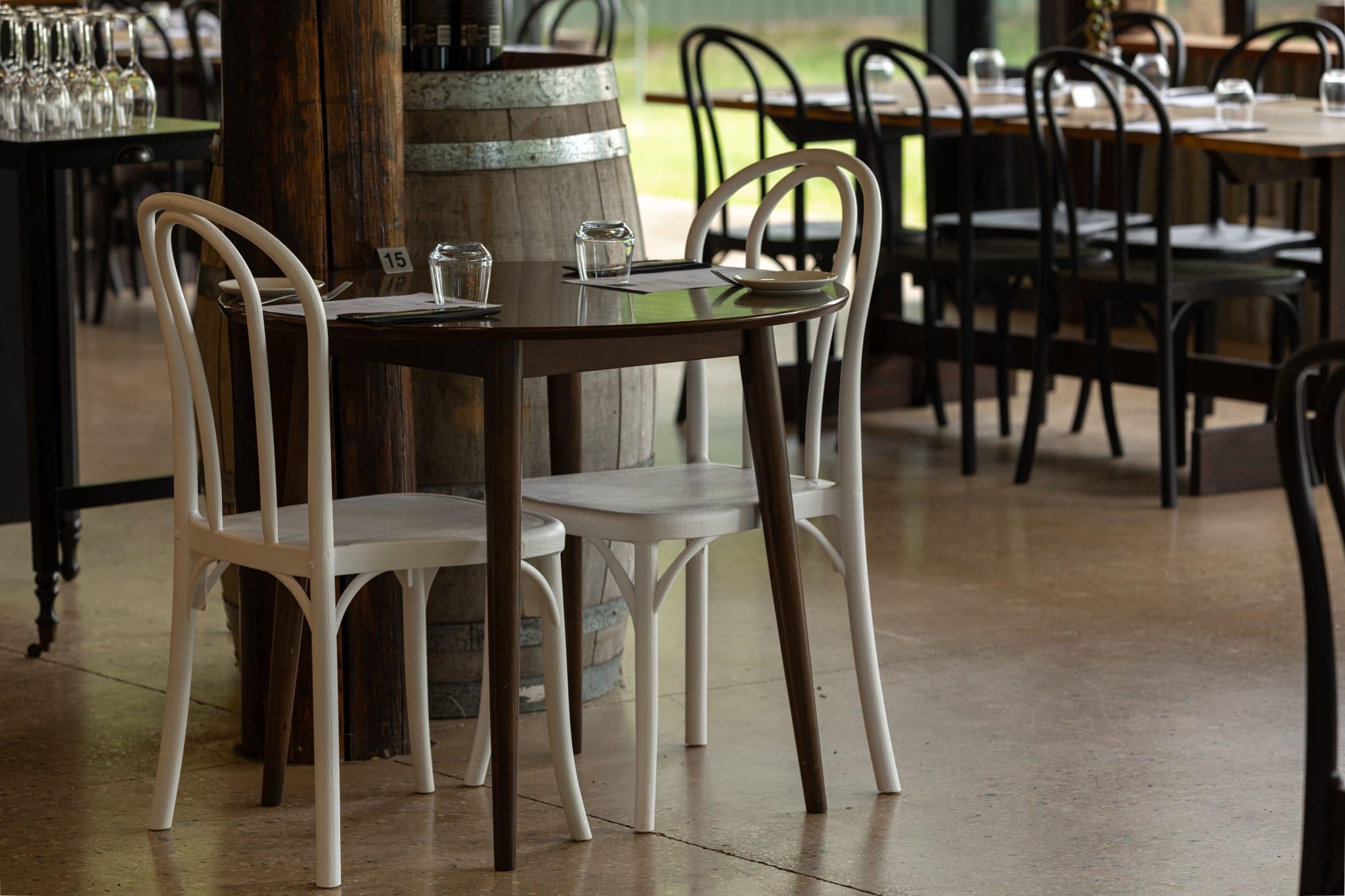
How does Place of Manufacture affect the cost of Café Chairs?
Across the globe there are many chair manufacturers, most commonly based in Asia and Europe. Different countries offer up different standards when it comes to quality control and therefore have different methods of chair production. This all affects the price that you pay.
Locally manufactured chairs are perhaps the top of the scale. The reason for this is due to the resource cost. Resources – such as the materials the chair is made from, right up to the labour that is used to create the chair – are much more costly than what they can be sourced for overseas. For this reason, imported chairs are often far cheaper than those made right here in Australia.
Often chairs that are created in an Asian warehouse are more towards the lower end of the price scale. These chairs are mass produced, with the very little attention being paid to the quality of chair that is being produced. Whilst these chairs may be much cheaper to purchase, they often don’t last and don’t stand up to the rigours of the industry.
Sitting somewhere in the middle of the scale are the beautiful European factories. These factories produce chairs of beautiful craftsmanship and excellent quality. Tight controls are maintained on the quality of the product produced and the workmen take pride in their work. The chairs that are produced in these factories may ask more in the store, but they are created with pride and built to last.
However, having said that, quality control must also be maintained by the importers. Not all European furniture is made to a high standard and not all Asian furniture can be written off as bad quality. It does have a lot to do with the materials that are used to create the chairs as well. With all chairs, regardless of their place of manufacture, the materials from which they are made will mean a vast difference in the price that you will pay for the chair.
How do Materials affect the cost of Café Chairs?
When you are looking at your café chairs, you will notice that the materials that the chair is made from will greatly affect the cost of the chair. For example, choosing from the timber range will be a much more costly venture than choosing from the polypropylene range.
Within the timber chair bracket, there are then further brackets. Depending on the timber used, timber chairs can range anywhere from $90 to $500. The most common and preferred hardwood that is used for chairs is European Beechwood. European beech is strong, inexpensive and has been used for furniture since the 1800s. It can be steam bent to create chair components effortlessly without needing joins.
This idea was pioneered in the mid-1800s by Michael Thonet in Vienna, and it revolutionised the concept of timber furniture. This process is still widely used by furniture makers across the globe today, and still proves create strong and reliable furniture.
European Beechwood is slow growing tree with a short grain. This makes the timber strong and stable. Alternatively, Rubberwood or Chinese Oak can be used. These timbers are fast growing and therefore ideal for mass-production of furniture. However, these timbers aren’t as strong and therefore product chairs of lesser quality.
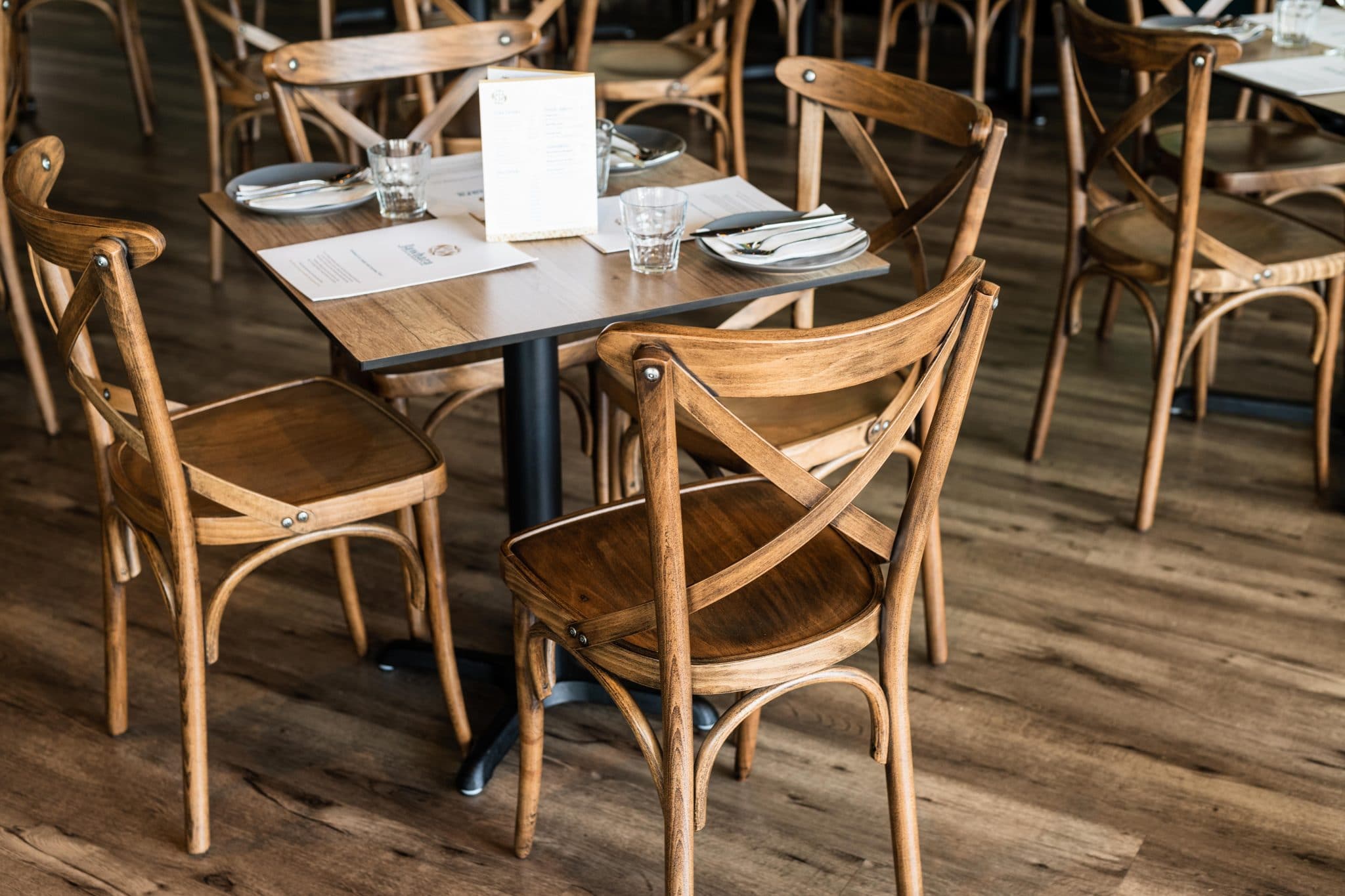
Chairs that are created from any metal material tend to sit somewhere in the middle of the scale. These chairs can be made from mild steel, aluminium and sometimes, though rarely, from stainless steel. Mild steel and aluminium will most often be the material that is used on any metal chair as it is the most cost effective.
With all metal chairs, the more details the chairs have, the higher the cost will be. All extra finishes such as chroming, galvanising and powder coating all add to the price of the chair. A chair that is polished rather than chromed or powder coated will not cost as much as chair that does have a chrome or powder coated finish. Further, whilst each weld adds strength to the chair, it also adds a cost. Therefore, the more complex the design of the chair, the more welding there is on the chair and consequently, the more the chair will cost.
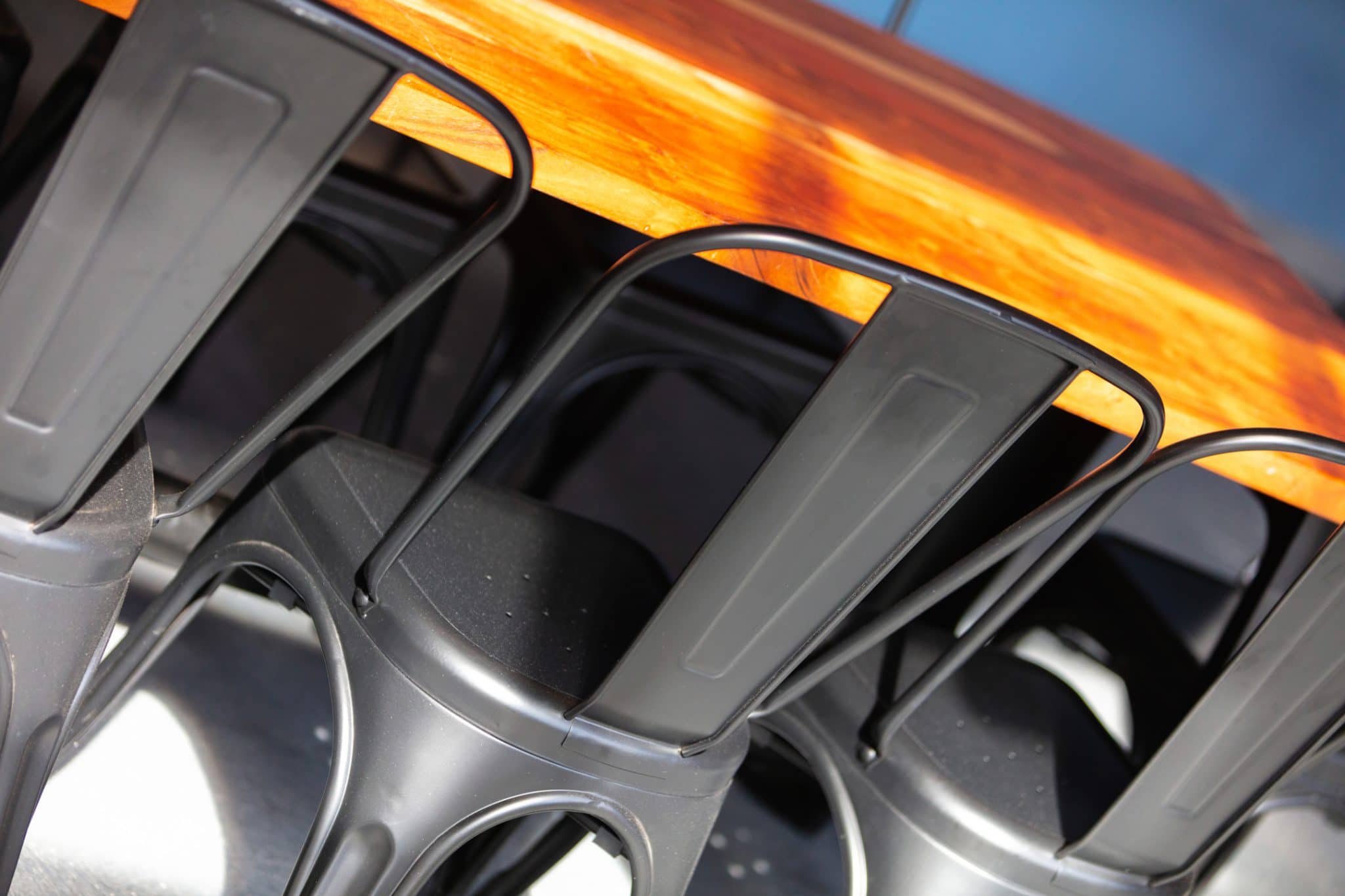
The base of the cost ladder would be made up of the polypropylene chairs. Polypropylene chairs are wildly popular among café owners for more than one reason. These chairs are strong, look fantastic, comfortable, easy to clean and cost effective. Ranging from anywhere between $50 to $250 a chair, polypropylene chairs tend to be less diverse in their pricing, and yet more diverse in the styles and colours on offer. The factor that decides on the pricing with polypropylene chairs would be the design of the chair.
The more complex the designs require more complex moulds – sometimes with more than one mould per chair. This means that these different sections then need to be joined together to create the finished product.
The finishing touches on the chairs can also contribute to the cost of polypropylene chairs. Often after a chair has been pulled from the mould, a razor needs to be run around the edges of the chair to ensure that they are smooth, and no sharp edges are left on the chair.
As previously mentioned, different countries offer different standards of quality and therefore chairs that originate from countries with lower standards will cost less due to lesser costs with manpower and the quality of the moulds and polypropylene used to create the chairs.
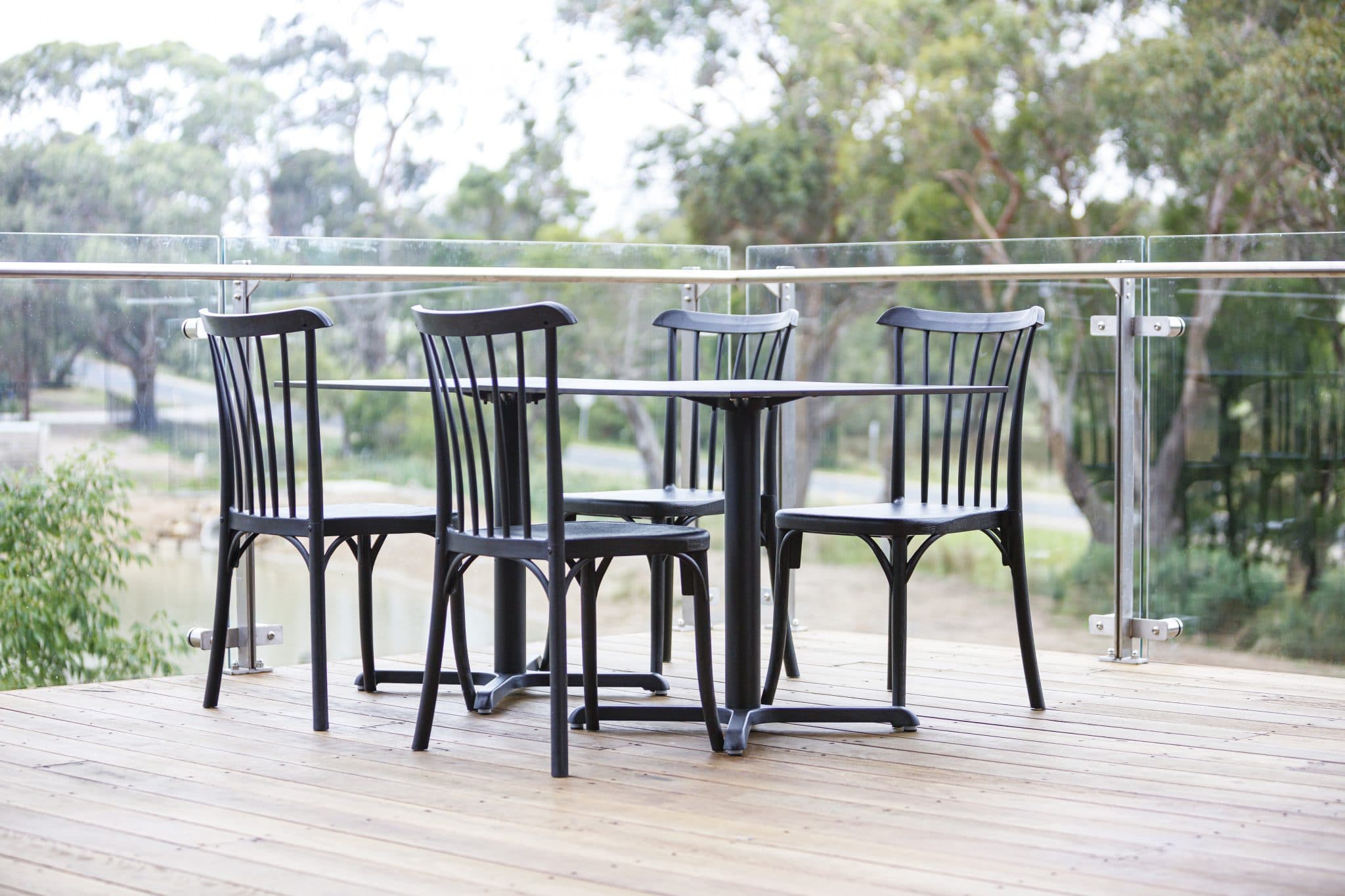
And yet, sometimes the cost of a chair isn’t only affected by the place of origin, or the materials used, but maybe the brand of the chair itself.
How does the brand of Café Chairs affect the cost?
All industries, whether they be clothing, cars, or furniture, have a brand hierarchy. Whilst a girl dreams of a Birken Bag and a guy dreams of a Ferrari, those in the hospitality industry dream of the Pedrali chairs. Whilst the items themselves might look amazing and are made to an excellent standard of quality, you are paying for the brand and badge as well.
Designer furniture is no different.
There are the replica chairs that are dime-a-dozen and created expressly to sell quickly with little thought as to the quality of the chair itself. The standard of these chairs is low and unfortunately, they mostly need to be replaced far too quickly.
Middle of the range furniture that doesn’t reflect a badge still offers quality, style, and comfort but at a fair price. These mid-range chairs tend to be the option that most go for. These chairs offer us the reliability we want from a café chair, withstanding the environment they’re placed in. They also offer comfort and style to the venues they grace, at a very reasonable price.
This leaves us with the top range chairs. Furniture created by boutique designers is beautiful and made to an excellent standard. The craftsmanship and style can’t be faulted, but the price tag doesn’t reflect only this, but also the badge that the chairs carry. Every designed chair pays royalties to their designer and can therefore demand a higher price due to the name attached to the chair.
This is where we leave the decision with you. Are you looking for something affordable that may need to be replaced soon, something that is of great quality that has been crafted to last, or are you looking to fit out your café with premium chairs that will be the envy of your hospitality mates?
